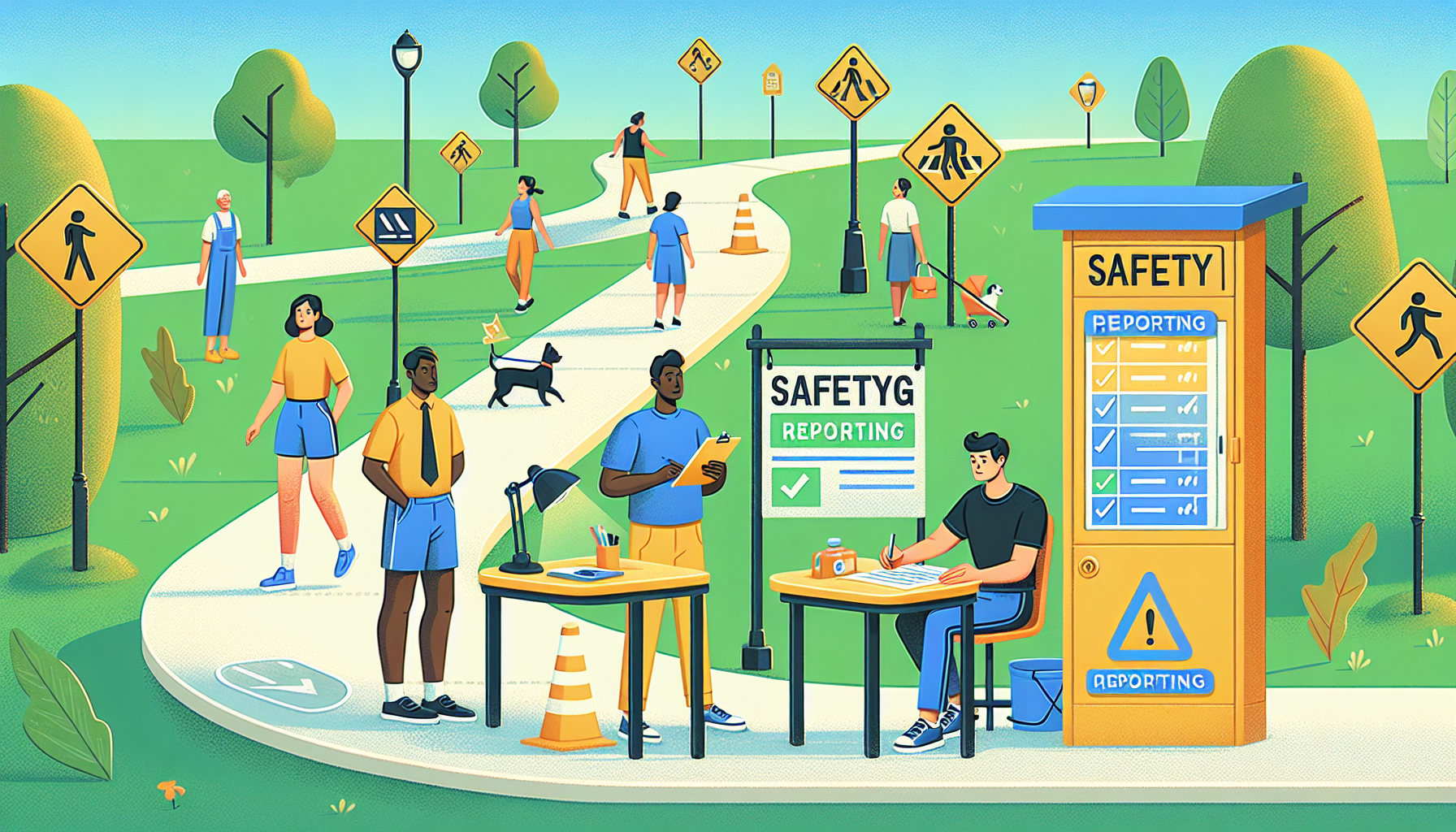Warehouse safety is of paramount importance when it comes to optimizing warehouse operations. With the increasing complexity and scale of modern warehouses, it is crucial for businesses to implement effective safety measures to protect both workers and inventory. One area of warehouse safety that often gets overlooked is the implementation of a walkway safety reporting system.
The Importance of Walkway Safety
Walkway safety is essential for a smooth and efficient workflow in any warehouse. Properly designed walkways ensure that workers can navigate the warehouse safely, reducing the risk of accidents and injuries. By implementing a walkway safety reporting system, businesses can identify potential hazards and take proactive steps to eliminate them, creating a safer working environment.
A walkway safety reporting system serves as a mechanism for workers to report any safety issues they encounter while navigating the warehouse. This can include loose flooring, damaged handrails, obstructed walkways, or inadequate lighting. By providing a platform for workers to report these issues, businesses can address them promptly, mitigating potential risks and improving overall safety.
Moreover, a comprehensive walkway safety reporting system allows businesses to track safety trends, identify recurring issues, and make data-driven decisions to optimize warehouse safety. By analyzing the reported incidents, businesses can identify common causes of accidents, develop targeted corrective actions, and continuously improve their safety protocols.
Components of a Walkway Safety Reporting System
To implement an effective walkway safety reporting system, businesses should consider the following components:
- Reporting Mechanism: Provide workers with an easy-to-use system for reporting safety issues. This can be an online portal, a mobile app, or even physical reporting stations strategically placed throughout the warehouse.
- Documentation: Once a safety issue is reported, it is crucial to document the details accurately. This includes the location of the issue, the type of hazard encountered, and any other relevant information.
- Tracking and Escalation: Ensure that reported safety issues are tracked and escalated to the appropriate personnel for resolution. This can be done through automated notifications or manual follow-up processes.
- Resolution and Documentation: Once a reported issue is resolved, document the actions taken to address the problem. This helps in maintaining an audit trail of safety improvements and provides a reference for future analysis.
- Analysis and Improvement: Regularly review the reported incidents and analyze the data to identify trends and patterns. This analysis can help businesses identify recurring safety issues and implement proactive measures to prevent them from occurring.
By implementing these components, businesses can establish a robust walkway safety reporting system that promotes the overall safety and efficiency of their warehouse operations.
HCO Innovations’ Forklift Pedestrian Detection System
One of the innovative solutions offered by HCO Innovations is the Forklift Pedestrian Detection System. This system utilizes advanced sensor technologies to detect the presence of pedestrians in forklift operation areas, reducing the risk of accidents and enhancing walkway safety. By installing this system, businesses can significantly improve the safety of their warehouse and provide their workers with an added layer of protection.
The system combines radar and camera-based sensors to accurately detect pedestrians in real-time. When a pedestrian is detected within the forklift’s vicinity, the system triggers an audible and visual warning to both the forklift operator and the pedestrian, alerting them of the potential danger. This advanced detection system helps prevent collisions and provides a safer working environment for all warehouse personnel.
In addition to the immediate on-site warnings, the Forklift Pedestrian Detection System also generates data that can be analyzed to identify high-risk areas, assess forklift operations, and make informed decisions to improve overall warehouse safety. By leveraging this system, businesses can proactively address potential safety hazards and reduce the likelihood of accidents.
Conclusion
Implementing a walkway safety reporting system is a crucial step towards enhancing warehouse safety. By providing a platform for workers to report safety issues and implementing the necessary components, businesses can create a safer working environment and optimize their warehouse operations. Additionally, advanced solutions like HCO Innovations’ Forklift Pedestrian Detection System further contribute to enhancing walkway safety and minimizing the risk of accidents. Investing in walkway safety is not only essential for protecting workers but also for improving productivity and efficiency within the warehouse.

